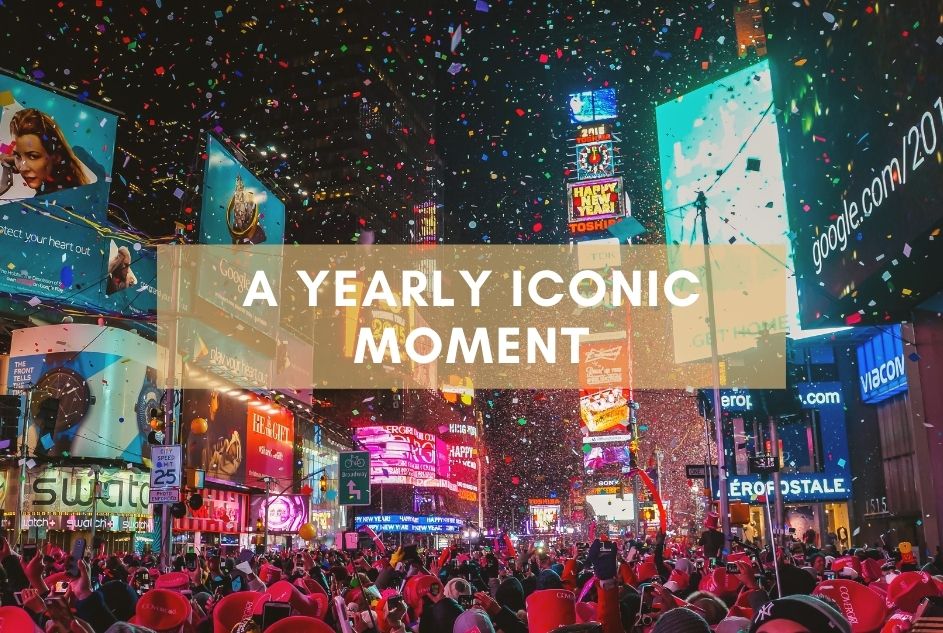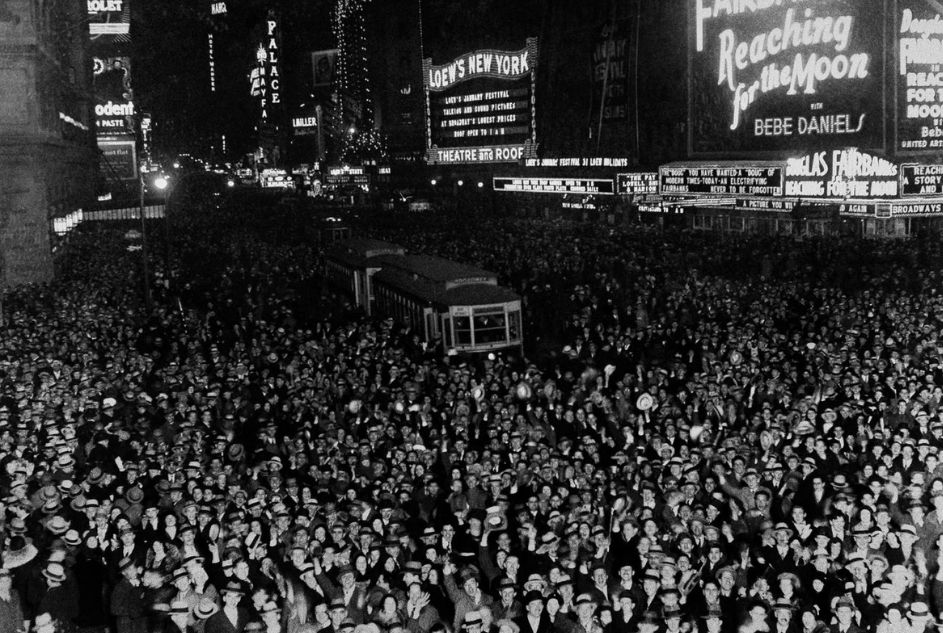

At 11:59 p.m. on New Year’s Eve, millions of people turn their eyes to a giant ball atop One Times Square in New York City. As the sparkly ball makes a 77-foot descent, revelers join in for the final countdown to midnight. Where did this tradition come from? Why drop a ball?
It’s About Time
In the old days, sailors used so-called time balls to set their chronometers while at sea. Using a spyglass, they scanned the harbor for balls that were dropped into the water at particular times, usually noon or 1 p.m.
The first time ball was dropped in 1829 in Portsmouth, England. In 1833, a time ball was installed atop England’s Royal Observatory at Greenwich to drop daily at 1 p.m. In 1845, the U.S. Naval Observatory in Washington, D.C., began dropping a time ball from a flagpole at noon each day in the city’s Foggy Bottom neighborhood. Soon after, many port towns began dropping time balls.
The story of the New Year’s Eve Times Square Ball Drop began a few decades later.


Times Square Ball Drop Timeline
1903-1904
In 1903, New Year’s Eve celebrations were moved to the recently completed The New York Times building in midtown Manhattan, then the second tallest building in New York City. The newspaper’s owner, Adolph Ochs, decided to commemorate the opening of the building and the New Year with a midnight fireworks display. Unfortunately, hot ashes and debris rained down onto the streets.
1907-1908
After four years of messy fireworks displays and a fireworks ban, Ochs asked his chief electrician to come up with an equally sparkly alternative. The result was a 700-pound wood and iron ball, 5 feet in diameter, adorned with 100 5-watt light bulbs. On December 31, 1907, the ball made its maiden descent from the repurposed mainmast of the battleship USS New Mexico on the roof of One Times Square.


1920
In 1920, a 400-pound, 5-foot diameter ball made entirely of wrought iron replaced the original 1907 ball.
1942-1943
The Times Square Ball, which had been dropped every New Year’s Eve since 1907, did not drop in 1942 and 1943. The ceremony was suspended because of a wartime dim-out order in New York City.
1955
In 1955, the wrought iron ball was replaced with an aluminum ball weighing only 150 pounds. This aluminum ball remained unchanged until the 1980s.


1980-1988
In 1981, red light bulbs and a green stem converted the ball into a “big apple” for the “I Love New York” marketing campaign that ran until 1988. After seven big-apple drops, the traditional glowing white ball with white light bulbs returned to light the sky above Times Square.
1995-1998
In 1995, another ball debuted in Times Square, featuring aluminum skin, rhinestones and a computerized lighting system featuring strobe lights. This ball was last dropped on December 31, 1998.


2000
To welcome the new millennium, a new ball was constructed for New Year’s Eve 1999. The 1,070-pound, 6-foot in diameter ball was covered with 600 clear, red, blue, green and yellow halogen bulbs, 96 strobe lights and 504 spinning Waterford Crystal triangles. This ball was last used on December 31, 2006.
2007
For the 100th anniversary of the Times Square Ball Drop tradition, in 2007 Waterford Crystal and Philips Lighting crafted a spectacular new LED crystal ball, doing away with the incandescent and halogen bulbs of the past century. The new state-of-the-art LED lighting technology significantly increased the brightness and color capabilities of the ball.
Centennial Ball Facts:
- Weight: 1,212 pounds
- Diameter: 6 feet
- Lighting: 9,576 energy-efficient light bulbs
- Energy consumption: equivalent of 10 toasters


2009 to Present
The 2007 ball was used only once. A new ball debuted on New Year’s Eve 2008, and it’s still in use today. This ball is illuminated by 32,256 LEDs (light emitting diodes); each LED module contains 48 LEDs: 12 red, 12 blue, 12 green and 12 white for a total of 8,064 of each color. When lit up, the ball’s crystals and LED lamps create more than 16 million different color combinations.
Current ball facts:
- Weight: 11,875 pounds
- Diameter: 12 feet
- Crystals: 2,688 Waterford Crystal triangles
- Lights: 32,256 Philips Luxeon LED lamps
- Color: 16.7 million color combinations
- Energy consumption: 50,000 watts
- Flagpole: extended to 475 feet above street level
Today, the Times Square Ball Drop is a yearly iconic moment that Americans love. Each New Year’s Eve, about one million people gather in Times Square and wait in the cold for the ball to drop. Millions more watch it on TV. Together, they count the last 60 seconds of the year, and when the numbers light at midnight, it’s a magical moment.
